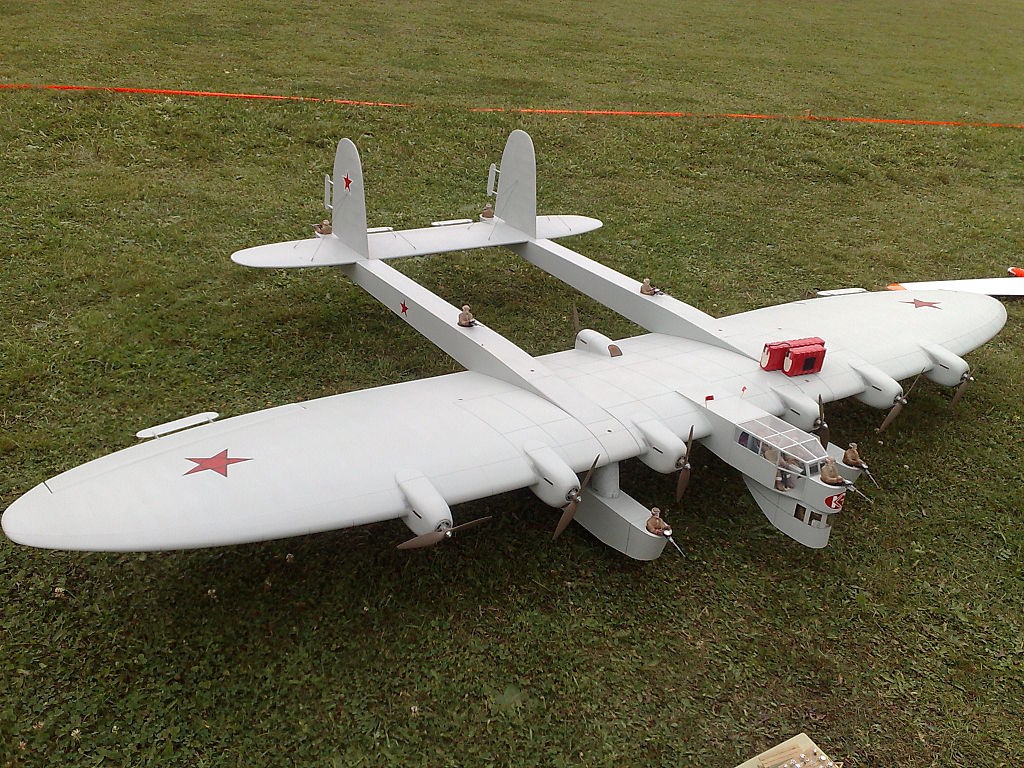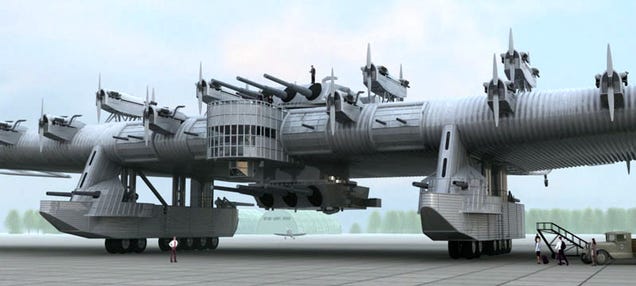faisal6309
SENIOR MEMBER

- Joined
- Apr 27, 2012
- Messages
- 3,861
- Reaction score
- 8
- Country
- Location
KALININ K-7 - A MASSIVE AIRCRAFT

During the early 1930s, a team of scientists led by Konstantin Kalinin tried to solve some of the most complex problems in aviation design. Thus the idea to create the Kalinin K-7 was born. It would be a plane of huge proportions, especially designed for overseas flights.
Sometime during the development of a design which might allow such a task to be performed, arose the concept of placing the cargo - people and objects - on the actual wings of the airplane, leading up to a variety of drawings and the concept of the flying wing. The airplane was even tested in a wind tunnel in 1928 and a protoype was begun in 1929. The proportions were staggering at the time - a 53 m (173 ft 11 in) wingspan and a 454 m² (4,886.8 ft²) wing area. Only one aircraft was actually built, but it was enough to stir up the imaginations of many enthusiasts.
These images are mere mad ravings that could never be built, yet they are truly impressive (these pictures were taken from a Russian website).









Kalinin K-7 - a massive aircraft

During the early 1930s, a team of scientists led by Konstantin Kalinin tried to solve some of the most complex problems in aviation design. Thus the idea to create the Kalinin K-7 was born. It would be a plane of huge proportions, especially designed for overseas flights.
Sometime during the development of a design which might allow such a task to be performed, arose the concept of placing the cargo - people and objects - on the actual wings of the airplane, leading up to a variety of drawings and the concept of the flying wing. The airplane was even tested in a wind tunnel in 1928 and a protoype was begun in 1929. The proportions were staggering at the time - a 53 m (173 ft 11 in) wingspan and a 454 m² (4,886.8 ft²) wing area. Only one aircraft was actually built, but it was enough to stir up the imaginations of many enthusiasts.
These images are mere mad ravings that could never be built, yet they are truly impressive (these pictures were taken from a Russian website).









Kalinin K-7 - a massive aircraft








